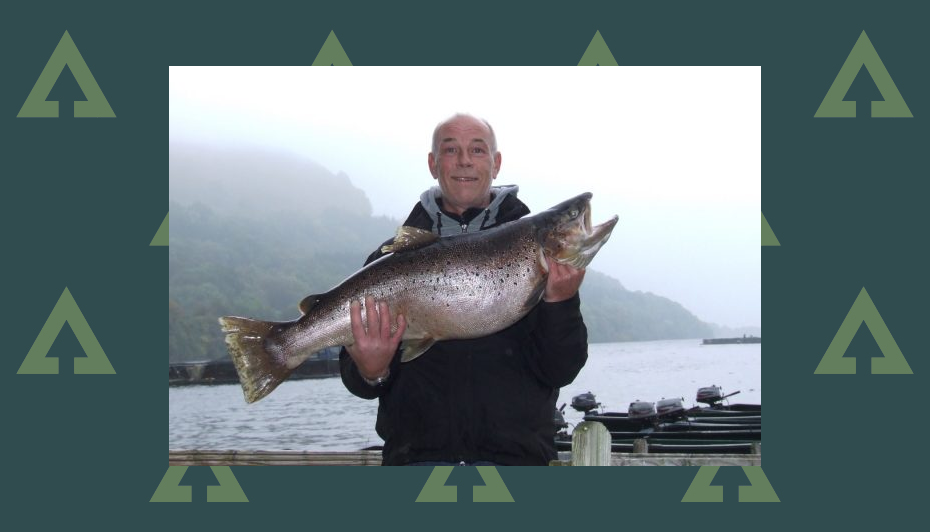Huge brown trout tempted on maggots
A bunch of maggots produced this amazing 25 lb 4 oz brown trout for Robert Melville.

Welcome to Advnture, the new home of AnglersMail.co.uk
The retired 49-years-old was on his own boat Predator in Ardveich Bay at Loch Earn in Scotland when the monster struck.
Winchburgh, West Lothian-based Robert said: “It was caught on the maggot on the bottom in around 35 feet of water using 8 lb line and a size 12 barbless hook.
“I am over the moon with my new personal best caught early in the morning when there was a strong easterly wind.
“It gave a good hard 20 minute battle before I finally got this fish in the net, and what a relief that was,” he added.
Biggest ever brown trout – and ferox
The current British rod-caught record for a natural (wild) brown trout stands at 31 lb 12 oz (14.4 kg).
The world record is thought to be 37 lb 6 oz taken in Sweden and history books note a fish of 39 lb 8oz by W.C. Muir in Scotland in 1866.
Advnture Newsletter
All the latest inspiration, tips and guides to help you plan your next Advnture!
Ferox trout is a traditional name for large predatory trout, which in Scotland feed largely on Arctic char.
Ferox trout have an unjustified reputation as cannibals… ferox coming from the Latin for ferocious!
The oldest recorded ferox trout in the UK is a fish of 23 years of age…. and it’s a very interesting species.
Ferox trout are present in most if not all large Scottish lochs, including Loch Awe, in Argyll and Bute, which produced the current record fish.
Noted venues also include Scottish lochs Lomond, Tay, and Ness, plus many less famous waters. Windermere in England, Llyn Tegid in Wales and Melvin in Northern Ireland also have a reputation.
They are highly prized by anglers and in recent years, angling pressure upon them has steadily increased.
Further research is being carried out in some lochs to look in more depth, at the behaviour of ferox trout. Using radio, acoustic and data storage tags, to look at spatial and diurnal movements.
- How to catch trout: our expert guide to landing a favourite fish
- Best fishing times: how knowing when to go can improve your chances of success
- Best fishing spots: how to find the perfect place to go fishing
Characteristics of ferox trout
Ferox have a marked preference for Arctic charr. True cannibalism is probably less common than might be supposed – but in the absence of other prey fish, ferox will certainly prey on their own kind. Growth potential is influenced by the size spectrum of available prey.
Ferox trout has the Latin name Salmo ferox – according to trusted sources including Wikipedia. But Scottish authorities currently do not regard Scottish ferox to always be genetically distinct from ordinary brown trout, Salmo trutta.
It has been argued to be a distinct species, being reproductively isolated from “normal” brown trout (Salmo trutta) of the same lakes, particularly in Ireland. However it is uncertain whether the ferox of different lakes all are of a single origin.
They display a wide variety of shape, colouration and spot patterns. The condition of individual fish is also very variable and depends on factors such as age, season, whether it had spawned during the previous winter and possible parasite infestation.
After subsisting on invertebrates, some brown trout switch to a diet based mainly on fish. Brown trout that switch to piscivory find that the switch not only boosts their growth, but also adds to their longevity.
Most Popular










